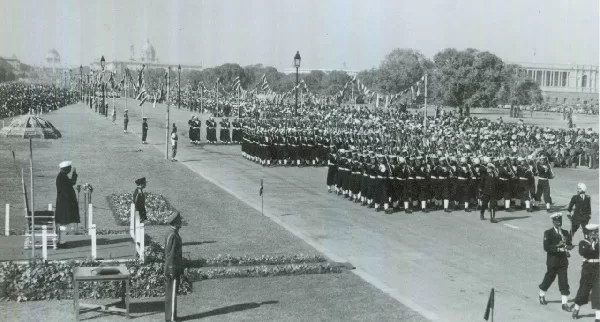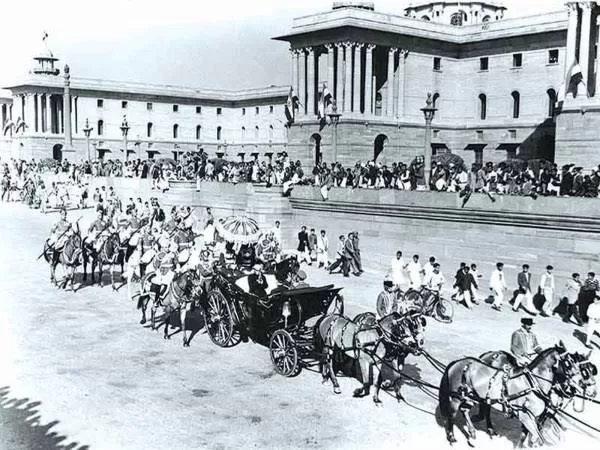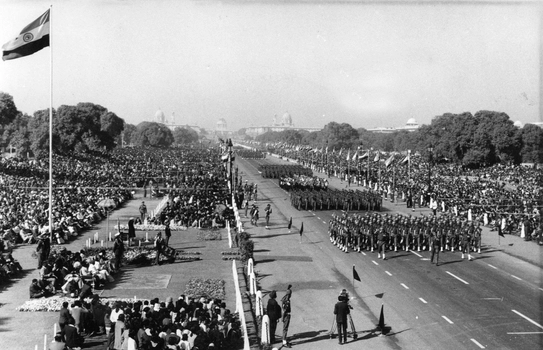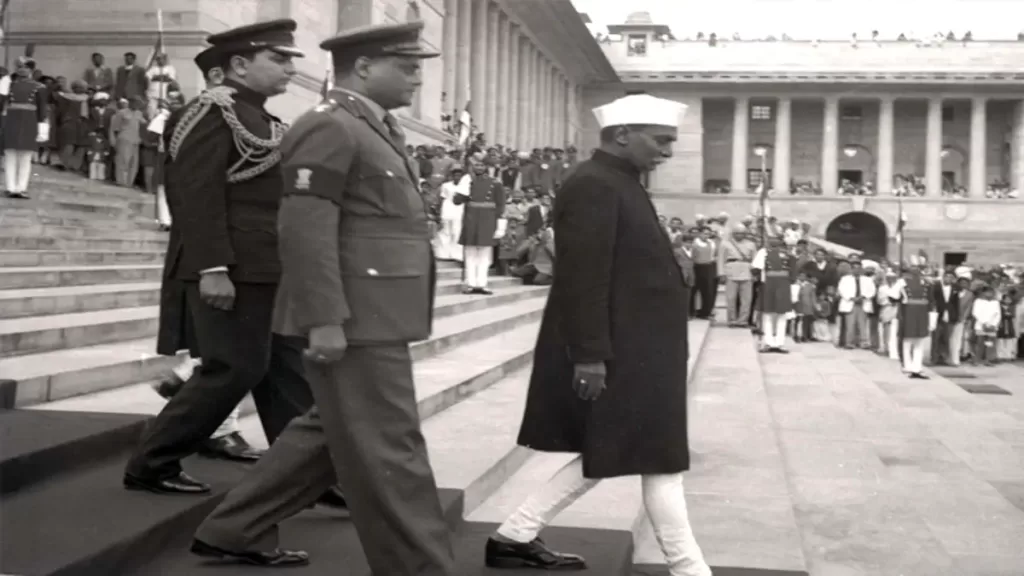The Republic of India came into existence on January 26, 1950. It was the culmination of more than a hundred years of nationalist struggle, and more than two years after Independence from British rule. India was now a sovereign, democratic republic, free to shape its destiny.
As we celebrate the 75th Republic Day, we look back at the cold January morning in 1950 when India became a republic.

From dominion to republic
India’s Independence on August 15, 1947, did not mean a complete break from the British Empire. For over two years, India remained a British dominion, governed by the Government of India Act of 1935, and still loyal to the Crown.
This changed on January 26, 1950. On that day, the Constitution of India, which had been drafted by the Constituent Assembly over nearly three years, came into force, replacing the Act of 1935 as the supreme law of the land. Dr Rajendra Prasad took office as the first President of India, succeeding the British monarch as the ceremonial head of the state.


The Constituent Assembly, which had acted as the provisional parliament, became the Parliament of India until the first general elections were held in 1951-52.
A parade of pride
Military parades are a way of displaying state power and glory. During the British Raj, royal parades and processions were frequent events, showcasing colonial dominance to Indians and the world.
The new republic chose to continue this tradition — but make it its own. Since 1950, Republic Day festivities have been marked by a grand military parade in New Delhi, which has grown more impressive and spectacular over the years.

The 1950 parade took place in the Irwin Amphitheatre opposite the Purana Qila, which is now known as the Major Dhyan Chand National Stadium. President Dr Rajendra Prasad reviewed the parade, and Indonesia President Sukarno was the guest of honour.
President Rajendra Prasad is on his way to the Irwin Amphitheatre for the first Republic Day parade. (Government of India) Historian Ramachandra Guha wrote that more than 3,000 soldiers of the armed forces marched past the president. (India After Gandhi, 2007). The parade featured marching units from the Army, Navy, Air Force, and the Delhi Police.
After the President inspected the parade, the Artillery, positioned behind the East Stand, fired a 31-gun salute, in three rounds. In between these rounds, the parade fired a ‘Feu-de-joie’ or the fire of joy — a ceremonial volley of gunfire — three times and then gave three ‘jails’ to the President of the Republic. Indian Air Force’s Liberator planes flew over the stadium, adding to the spectacle.
After the final massed bands had passed by, the President’s horse-drawn carriage entered the stadium, escorted by the President’s Bodyguard on horses (a tradition that persists to date). After the Bodyguard saluted the President, Dr Prasad got into his carriage and returned to Government House (now Rashtrapati Bhawan).
Guha summed up the day’s events as: “Gandhi’s India was declaring itself as a sovereign nation-state.”

A work in progress
While January 26 was a day of joy, the leaders of the young country knew that they had a tough job ahead. As Dr B R Ambedkar, chairman of the Constituent Assembly’s drafting committee, said in his final Constituent Assembly speech on November 26, 1949:
“On the 26th of January 1950, we are going to enter into a life of contradictions. In politics we will have equality and in social and economic life we will have inequality… We must remove this contradiction at the earliest possible moment or else those who suffer from inequality will blow up the structure of political democracy which this Assembly has so painstakingly built up.”

